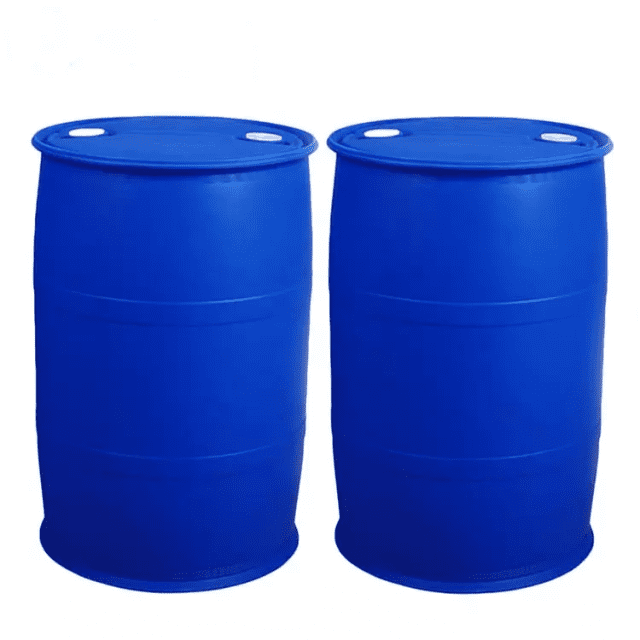Diluent is based on Cyclohexanone. Butyl acetate. Anhydrous xylene is a mixture of organic solvents.
Chilling Innovations: How Refrigerator Catalysts Enhance Energy Efficiency and Air Quality for a Greener Future
Explore the world of refrigerator catalysts and discover how they contribute to improved energy efficiency, air purification, and environmental sustainability in modern refrigeration systems.
Introduction
Refrigerator catalysts are specialized materials designed to improve the performance and energy efficiency of refrigeration systems while also enhancing air quality. These innovative catalysts play a crucial role in promoting a greener and more sustainable future for refrigeration technology. This article delves into the concept of refrigerator catalysts, their applications, and the advancements that are shaping their future.
Understanding Refrigerator Catalysts
Refrigerator catalysts are typically composed of metal or metal oxide nanoparticles, which are integrated into various components of the refrigeration system, such as the evaporator, condenser, or air filters. They function by facilitating chemical reactions that help to eliminate volatile organic compounds (VOCs), bacteria, and other airborne contaminants, resulting in improved air quality and reduced energy consumption.
Applications of Refrigerator Catalysts
The versatility of refrigerator catalysts has led to their widespread adoption across various refrigeration systems. Some of the most prominent applications include:
Air Purification: Refrigerator catalysts are used in air filters to remove VOCs, bacteria, and other airborne contaminants, ensuring that the air inside the refrigerator remains fresh and clean. This not only enhances food safety but also reduces the need for frequent cleaning and maintenance.
Energy Efficiency: Refrigerator catalysts can improve the heat transfer efficiency of the evaporator and condenser coils, leading to reduced energy consumption and lower operating costs. By facilitating the breakdown of frost and ice buildup, these catalysts also help to maintain optimal cooling performance.
Odor Elimination: Refrigerator catalysts can effectively eliminate unpleasant odors caused by food spoilage or other sources. This is achieved through the oxidation of odor-causing molecules, which are converted into harmless by-products such as water and carbon dioxide.
Advancements in Refrigerator Catalysts Technology
The field of refrigerator catalysts is continually evolving, with researchers and manufacturers constantly seeking to develop new and improved materials. Some of the latest advancements in refrigerator catalysts technology include:
Nanotechnology: The integration of nanotechnology in refrigerator catalysts has led to the creation of advanced materials with enhanced properties, such as increased surface area, improved stability, and better dispersion. These features contribute to more efficient and effective air purification and energy savings.
Photocatalysts: Photocatalysts are a type of refrigerator catalyst that utilizes light energy, typically from UV or visible light, to initiate chemical reactions. These materials can effectively decompose organic pollutants and eliminate bacteria, making them an attractive option for air purification and odor elimination in refrigeration systems.
Multifunctional Catalysts: Researchers are focusing on developing multifunctional refrigerator catalysts that can perform multiple tasks simultaneously, such as air purification, odor elimination, and energy efficiency enhancement. These innovative materials have the potential to revolutionize the refrigeration industry by offering comprehensive performance improvements in a single solution.
The Future of Refrigerator Catalysts
As the demand for energy-efficient, eco-friendly, and high-performance refrigeration systems continues to grow, the market for refrigerator catalysts is expected to expand significantly. According to a recent study, the global refrigerator catalysts market is projected to reach USD 1.2 billion by 2026, growing at a CAGR of 6.8% during the forecast period.
The future of refrigerator catalysts lies in the development of advanced materials that can address the evolving needs of the refrigeration industry. Researchers are focusing on creating more efficient, durable, and sustainable catalysts that can contribute to greener and more environmentally conscious refrigeration systems.
Conclusion
Refrigerator catalysts have undeniably transformed the landscape of refrigeration technology, offering unparalleled energy efficiency, air purification, and sustainability. As advancements in technology continue to shape the future of refrigerator catalysts, we can expect to see even more innovative and eco-friendly solutions that will further revolutionize the refrigeration industry. With their unique properties and wide-ranging applications, refrigerator catalysts are truly a testament to the power of human ingenuity and the relentless pursuit of progress.
Recommended Reading:
NT CAT DMDEE
NT CAT PC-5
NT CAT DMP-30
NT CAT DMEA
NT CAT BDMA
NT CAT PC-9
NT CAT ZR-50
NT CAT TMR-2
NT CAT PC-77
NT CAT PC-41
NT CAT PC-8
What are all the catalysts in the synthesis of polylactic acid?
The catalysts used in the synthesis of PLA are mainly as follows:
Tin catalysts: This is a class of catalysts commonly used in the synthesis of PLA, including tin, stannous chloride and stannous octanoate. Among them, stannous octanoate is considered to be the best catalyst. Under certain conditions, PLA synthesised using stannous octanoate as catalyst has excellent properties, such as no oxidation, discolouration, and the viscosity average molecular weight can reach a high level.
Metal catalysts: Metal catalysts also play an important role in the synthesis of PLA. These catalysts can promote the condensation reaction of lactic acid monomers, so as to effectively form PLA chains.
In addition to the common catalysts mentioned above, there are some other types of catalysts that may be used in the synthesis of PLA, but the exact catalyst to be used depends on factors such as the synthesis method, the reaction conditions, and the properties of the desired PLA. Therefore, when selecting a catalyst, various factors need to be considered in order to achieve the best synthesis results.
Please note that the selection and use of catalysts should follow the relevant safety regulations and operating procedures to ensure the safety and reliability of the experimental process. Meanwhile, with the continuous development of science and technology, new types of catalysts are emerging, so it may also be necessary to pay attention to the latest research results and technological advances in practical applications.
Recommended Related Reading:
Dabco NE1060/Non-emissive polyurethane catalyst
How to prepare a solution of stannous toluene octanoate
To prepare the stannous octanoate toluene solution, the following steps may be followed:
Prepare the required materials and equipment including stannous octanoate, toluene solvent, containers, stirrers and suitable heating equipment.
Take an appropriate amount of the toluene solvent and pour it into the container and heat it to a suitable temperature to induce the dissolution process. The exact heating temperature should be determined according to the nature of the toluene solvent and stannous octanoate used to ensure that the temperature is not too high to cause volatilisation of the solvent or other unfavourable reactions.
Gradually add the corresponding proportion of stannous octanoate while mixing well with a stirrer. The amount of stannous octanoate added should be determined by the desired concentration of the solution.
Stir continuously until the stannous octanoate is completely dissolved in the toluene solvent and a homogeneous solution is formed.
Please note that the preparation process should be carried out in a safe manner, avoiding contact with skin and inhalation of harmful gases. Meanwhile, both stannous octanoate and toluene are chemical substances that need to be stored and used under suitable conditions to avoid reaction with other substances or causing environmental pollution.
In addition, the specific proportion and conditions of preparation may vary depending on the application requirements, nature of the materials or safety regulations. Therefore, in practice, it is recommended to refer to relevant chemical manuals, professional information or consult chemical experts to ensure the accuracy and safety of the formulation process.
Recommended Related Reading:
Dabco NE1060/Non-emissive polyurethane catalyst
Calculation of catalysts in polyurethane soft foam formulations
The kinetics of the reaction between hydroxyl compounds and isocyanates – d (- NCO)/dt=K0 x (- NCO) x (- OH)
K1 is the forward reaction rate of the formation of complexes between isocyanates and hydroxyl compounds
K2 is the negative reaction rate of the formation of complexes between isocyanates and hydroxyl compounds
K3 is the forward reaction rate at which complexes react with hydroxyl compounds to form aminoformates and hydroxyl compounds.
K0=[K1 x K3 x (- OH)]/[K2+K3 x
Arrhenius equation
K=Ae ^ [- (Ea/RT)]
A: Exponential factor.
E=2.718
Ea: KJ/mol
R=8.31 (J/mol. K)
Calculation of reaction heat for the formation of functional groups such as urea, polyurethane, biuret, and urea formate:
Bond dissociation energy (KJ/mol)
C-N 205.1~251.2
C-C 230.2~293.0
C-O 293.0-314.0
N-H 351.6~406.0
C-H 364.9~393.5
O-H 422.8~460.5
C=C 418.6~523.3
C=O 594.1~694.9
Reaction formula:
RNCO+rOH → RNHCOOr
RNCO+HOH → RNHCOOH+RNCO → RNHCONHR+OCO ↑
RNHCOOr+RNCO → RNCONHRCOOr
RNHCONHr+RNCO → RNCONHRCONHr
The volume ratio of gas to the total volume of the polymerization system (Vg/Vo) in the polymerization system affects the temperature control ability: gas monomers affect the concentration (mol/L), which affects the polymerization heat [Q (KJ/L)=Rp (mol/L) * (- H)]. The heat of polymerization is transferred to the gas dispersion medium, causing the gas to absorb heat and expand (PV=NR/T). After a sudden increase in temperature in the polymerization system, the gas releases and carries away a large amount of heat (approximately in a straight line with Vg/Vo)
When preparing polyurethane in one step, the activation energy of amino acids is about 60 (mol. K), and the activation energy of urea reaction is 17 (mol. K)
The foam system is easier to implement than the solution suspension system. Dispersive polymerization exhibits the Norrish Tromasof effect at the beginning of the reaction, slowing down the rate of change of chain growth parameters over time and improving the monodispersity of the product.
Dispersion polymerization is a method of separating the polymerization system into numerous fine foam by gas, so that the polymerization components can be converted into the surface liquid film of foam and the “polyhedral boundary liquid cell” connecting multiple liquid films can form a special dispersion phase for polymerization.
The foam system uses gas as the dispersion medium, and the gas expands and cools suddenly when it is heated, and the negative pressure generated when the gas escapes will further polymerize the residual single concentration of the system, and accelerate and carry the evaporation of water molecules and the removal of small molecules.
The dispersion effect of gas on the polymerization system is not equivalent to true dilution of monomers.
General formula for half-life of non first-order reactions
T=[2 ^ (n-1) -1]/[a x k x (n-1) x A ^ (n-1)]
Second order reaction rate constant
A+B → Q+S
Kt=[1/(CA0-CB0)] x ln [(CB0 x CA)/(CA0 x CB)]
CA0 x Kt=[1/(1-M)] x ln {[M (1-xA)]/(M-xA)}, where M=CB0/CA0
Attachment:
Example of calculating the density of polyurethane soft foam
General polyether ternary alcohol Ppg: 50pop: 50tdi-80:42.8hoh: 3.17L-580:1a33:0.34sn: 0.17
Calculated: 4.34 2.17 6.51 38.2 112% 17% 5.2 1.74 122 Recalculated, 28kg/cubic meter
Example of calculation for polyurethane soft foam catalyst:
Universal polyether ternary alcohol ppg: 90 pop: 10 tdi-80:: 35.5 hoh: 2.2 L-580:0.84 Black slurry: 6
Calculated: A33:0.18 T-9:0.25
A33:0.14 T-9:0.24
A33:0.13 T-9:0.35
A33:0.12 T-9:0.30
Tolerance and turning points
Calculation of vertical foam flow rate and lifting speed:
Formula (for example only) PPG: 100, TDI: 80, HOH: 6, SI: 1.5, A33: * * *, SN: * * *, MC: 14.8
The diameter of the vertical bubble circular mold is 1.25.
Polyether flow rate is 12 kilograms per minute.
What is the speed of improvement in meters per minute
Calculate the formula density of 12 kilograms per cubic meter. The total weight of the formula is 173.5 kilograms. The formula volume is 14.46 cubic meters. Circular mold cross-sectional area: 1.23 square meters.
Set a loss rate of 5%.
Boosting speed: [14.46 x 12% x (1-5%)]/1.23=1.34 meters per minute.
Related reading recommendations:
NT CAT U26
NT CAT K-15
NT CAT D60
TMPEDA
TEDA
Morpholine
2-(2-Aminoethoxy)ethanol
N-Methylmorpholine
4-Formylmorpholine
dimethomorph
3-morpholinopropylamine
4-Acryloylmorpholine
Foaming Catalysts in Action: Unraveling the Role of Catalysts in Polyurethane Foam Production
Introduction
Polyurethane foams are a versatile class of materials widely used in various applications, including insulation, cushioning, and packaging. The production of polyurethane foams involves a reaction between polyols and isocyanates, which generates carbon dioxide gas, leading to the formation of a cellular structure. Foaming catalysts play a crucial role in this process, accelerating the reaction and influencing the properties of the resulting foam. This article delves into the role of foaming catalysts, their types, mechanisms, and the impact they have on the polyurethane foam industry.
Understanding Foaming Catalysts and Their Mechanisms
Foaming catalysts are substances that promote the formation of polyurethane foams by accelerating the reaction between polyols and isocyanates, as well as the decomposition of blowing agents, which generate the gas responsible for foam expansion. They work by increasing the nucleophilicity of the polyol, facilitating its reaction with the isocyanate, and enhancing the decomposition of blowing agents. Foaming catalysts can also influence the structure and properties of the resulting foam, such as its density, cell size, and mechanical properties.
Types of Foaming Catalysts
Foaming catalysts can be classified into three main categories based on their chemical nature:
Amines: Amines are the most commonly used foaming catalysts, and they can be further divided into tertiary amines and secondary amines. Tertiary amines, such as triethylenediamine (TEDA) and N,N-dimethylcyclohexylamine (DMCHA), are strong catalysts for both the gelation and blowing reactions. Secondary amines, such as N,N-dimethylethanolamine (DMEA), primarily catalyze the gelation reaction but have a weaker effect on the blowing reaction.

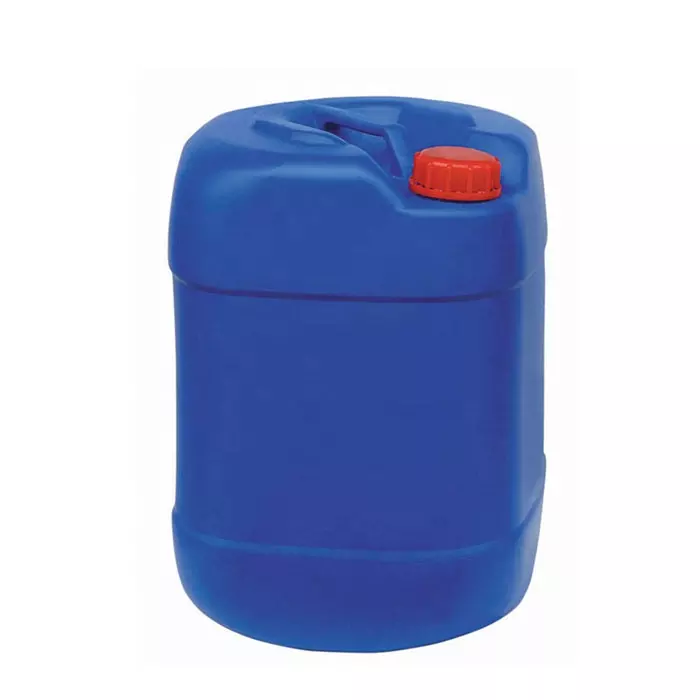
Metal Salts: Metal salts, such as tin, bismuth, and lead salts, are also used as foaming catalysts. They are typically more active in the gelation reaction than amines but less active in the blowing reaction. Examples of metal salt catalysts include dibutyltin dilaurate (DBTDL), stannous octoate, and bismuth neodecanoate.
Organometallic Compounds: Organometallic compounds, such as alkyl tin compounds and organotin mercaptides, are used as foaming catalysts due to their high activity and selectivity. They primarily catalyze the gelation reaction and can be used in combination with amine catalysts to achieve desired properties.
Impact of Foaming Catalysts on the Polyurethane Foam Industry
The use of foaming catalysts offers numerous benefits to the polyurethane foam industry, including:
Enhanced Foam Production Efficiency: Foaming catalysts accelerate the reaction between polyols and isocyanates, as well as the decomposition of blowing agents, enabling faster foam production times and increased productivity.
Improved Foam Properties: By influencing the structure and properties of polyurethane foams, catalysts can help achieve desired characteristics, such as improved mechanical strength, better insulation, and enhanced durability.
Customization of Polyurethane Foams: The selection of appropriate catalysts and their combinations allows for the customization of polyurethane foams to suit specific applications, such as flexible foams for furniture, rigid foams for insulation, or specialty foams for packaging.
Reduced Environmental Impact: Foaming catalysts can contribute to greener production processes by minimizing waste, reducing energy consumption, and enabling the use of renewable resources in polyurethane foam synthesis.
Foaming Catalysts in Action: The Polyurethane Foam Production Process
The polyurethane foam production process typically involves the following steps:
Mixing of Polyols and Isocyanates: Polyols and isocyanates are mixed together, along with other additives, such as surfactants, flame retardants, and blowing agents.
Catalyst Addition: Foaming catalysts are added to the mixture, accelerating the reaction between polyols and isocyanates and the decomposition of blowing agents.
Foam Expansion: The generated gas expands the mixture, creating a cellular structure.
Curing: The polyurethane foam is allowed to cure, forming a solid material with the desired properties.
Ongoing Research and Future Prospects
The field of foaming catalysts is continuously evolving, with researchers exploring new materials, designs, and applications. Some of the exciting developments in this area include:
Green Catalysts: The search for environmentally friendly foaming catalysts is an ongoing effort, aiming to minimize the use of toxic materials and promote sustainable production processes.
Nanotechnology: The incorporation of nanomaterials in foaming catalysts offers the potential for improved catalytic performance, enhanced foam properties, and new applications.
Computational Design: Advanced computational tools and techniques are being employed to predict and optimize the performance of foaming catalysts, accelerating the discovery and development of new materials.
Conclusion
Foaming catalysts play a vital role in the production and performance of polyurethane foams, offering numerous benefits to the polyurethane foam industry. As research continues to uncover new catalysts and applications, the role of foaming catalysts will undoubtedly expand, contributing to the development of innovative, sustainable, and high-performance polyurethane foam products.
Recommended Reading:
NT CAT U28
NT CAT U26
NT CAT K-15
NT CAT D60
TMPEDA
TEDA
Morpholine
2-(2-Aminoethoxy)ethanol
DMAPA
NT CAT A-1
The Role of Polyurethane Catalysts: Enhancing the Production and Performance of Polyurethane Materials
Introduction
Polyurethanes are a versatile class of polymers widely used in various applications, including foams, coatings, adhesives, and elastomers. The production of polyurethanes involves a reaction between polyols and isocyanates, which can be significantly influenced by the use of catalysts. Polyurethane catalysts play a crucial role in enhancing the efficiency, quality, and properties of polyurethane materials. This article delves into the role of polyurethane catalysts, their types, mechanisms, and the impact they have on the polyurethane industry.
Understanding Polyurethane Catalysts and Their Mechanisms
Polyurethane catalysts are substances that accelerate the reaction between polyols and isocyanates, promoting the formation of polyurethane polymers. They work by increasing the nucleophilicity of the polyol, facilitating its reaction with the isocyanate. Polyurethane catalysts can also influence the structure and properties of the resulting polymer, such as its density, cell structure, and mechanical properties.
Types of Polyurethane Catalysts
Polyurethane catalysts can be classified into three main categories based on their chemical nature:
Amines: Amines are the most commonly used polyurethane catalysts. They can be further divided into tertiary amines, which are strong catalysts for both the gelation and blowing reactions, and secondary amines, which primarily catalyze the gelation reaction. Examples of amine catalysts include triethylenediamine (TEDA), dimethylcyclohexylamine (DMCHA), and N,N-dimethylethanolamine (DMEA).

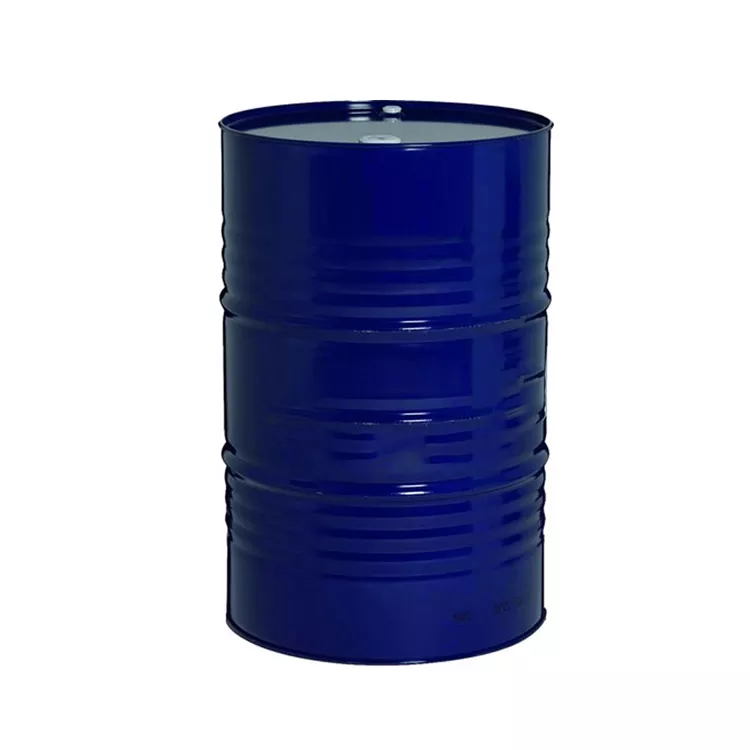
Metal Salts: Metal salts, such as tin, bismuth, and lead salts, are also used as polyurethane catalysts. They are typically more active in the gelation reaction than amines but less active in the blowing reaction. Examples of metal salt catalysts include dibutyltin dilaurate (DBTDL), stannous octoate, and bismuth neodecanoate.
Organometallic Compounds: Organometallic compounds, such as alkyl tin compounds and organotin mercaptides, are used as polyurethane catalysts due to their high activity and selectivity. They primarily catalyze the gelation reaction and can be used in combination with amine catalysts to achieve desired properties.
Impact of Polyurethane Catalysts on the Polyurethane Industry
The use of polyurethane catalysts offers numerous benefits to the polyurethane industry, including:
Enhanced Reaction Efficiency: Polyurethane catalysts accelerate the reaction between polyols and isocyanates, enabling faster production times and increased productivity.
Improved Polyurethane Properties: By influencing the structure and properties of polyurethane materials, catalysts can help achieve desired characteristics, such as improved mechanical strength, better insulation, and enhanced durability.
Customization of Polyurethane Materials: The selection of appropriate catalysts and their combinations allows for the customization of polyurethane materials to suit specific applications, such as flexible foams for furniture, rigid foams for insulation, or coatings for automotive finishes.
Reduced Environmental Impact: Polyurethane catalysts can contribute to greener production processes by minimizing waste, reducing energy consumption, and enabling the use of renewable resources in polyurethane synthesis.
Ongoing Research and Future Prospects
The field of polyurethane catalysts is continuously evolving, with researchers exploring new materials, designs, and applications. Some of the exciting developments in this area include:
Green Catalysts: The search for environmentally friendly polyurethane catalysts is an ongoing effort, aiming to minimize the use of toxic materials and promote sustainable production processes.
Nanotechnology: The incorporation of nanomaterials in polyurethane catalysts offers the potential for improved catalytic performance, enhanced polyurethane properties, and new applications.
Computational Design: Advanced computational tools and techniques are being employed to predict and optimize the performance of polyurethane catalysts, accelerating the discovery and development of new materials.
Conclusion
Polyurethane catalysts play a vital role in the production and performance of polyurethane materials, offering numerous benefits to the polyurethane industry. As research continues to uncover new catalysts and applications, the role of polyurethane catalysts will undoubtedly expand, contributing to the development of innovative, sustainable, and high-performance polyurethane products.
Recommended Reading:
NT CAT DMDEE
NT CAT PC-5
NT CAT DMP-30
NT CAT DMEA
NT CAT BDMA
NT CAT PC-9
NT CAT ZR-50
NT CAT TMR-2
NT CAT PC-77
NT CAT PC-8
The Role of Catalysts: Accelerating Chemical Reactions and Shaping Industries
Introduction
Catalysts are substances that play a crucial role in accelerating chemical reactions without being consumed in the process. They are essential in various industries, including pharmaceuticals, petrochemicals, and automotive, where they facilitate the production of numerous products and help reduce the environmental impact of chemical processes. This article explores the fascinating role of catalysts, their mechanisms, types, applications, and the ongoing research in this vital field.
Understanding Catalysts and Their Mechanisms
Catalysts work by providing an alternative pathway for a chemical reaction to occur, lowering the activation energy required for the reactants to transform into products. This reduction in activation energy enables reactions to proceed more rapidly and efficiently, often under milder conditions. Catalysts achieve this by interacting with reactant molecules, forming temporary intermediates that facilitate the formation of products. Once the reaction is complete, the catalyst is released unchanged and can be reused in subsequent reactions.
Types of Catalysts
Catalysts can be broadly classified into two categories based on their phase:
Homogeneous Catalysts: These catalysts exist in the same phase as the reactants, usually as gases or liquids. Homogeneous catalysts often exhibit high selectivity and efficiency but can be challenging to separate and recycle from the reaction mixture. Examples include acid and base catalysts, transition metal complexes, and organocatalysts.
Heterogeneous Catalysts: These catalysts exist in a different phase than the reactants, typically as solids. Heterogeneous catalysts are easier to separate and reuse but may exhibit lower selectivity and efficiency compared to homogeneous catalysts. Examples include metal catalysts, metal oxide catalysts, and zeolites.
Applications of Catalysts
Catalysts are ubiquitous in various industries, playing a vital role in numerous processes, such as:
Petrochemical Industry: Catalysts are employed in several petrochemical processes, including cracking, reforming, and hydrocracking, to produce fuels, lubricants, and chemical intermediates.
Automotive Industry: Catalytic converters in automotive exhaust systems use catalysts to convert harmful pollutants, such as carbon monoxide, nitrogen oxides, and hydrocarbons, into less harmful substances like nitrogen, carbon dioxide, and water vapor.

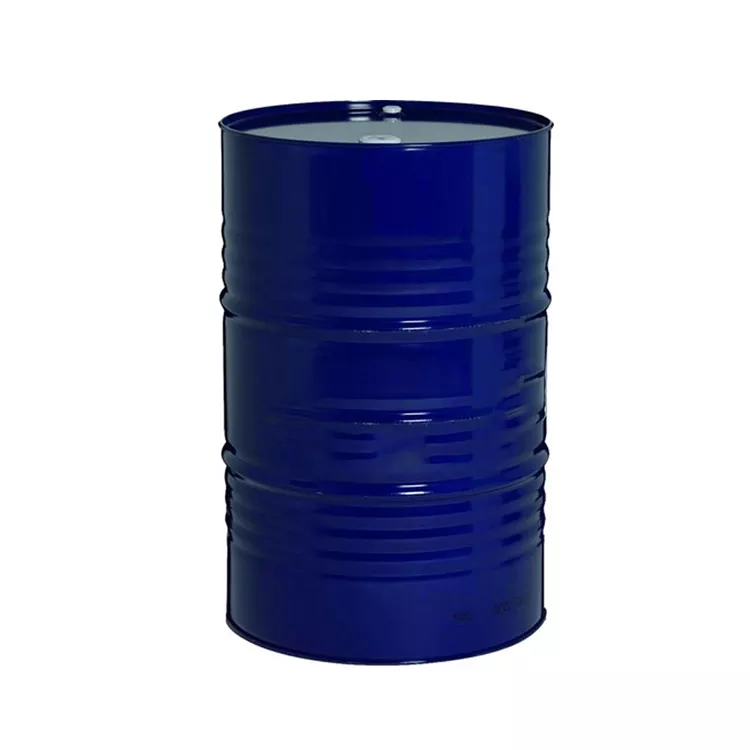
Pharmaceutical Industry: Catalysts are essential in the synthesis of active pharmaceutical ingredients (APIs), enabling the production of life-saving drugs with improved efficiency and reduced waste.
Food Industry: Catalysts are used in food processing, such as the hydrogenation of vegetable oils to produce margarine and the synthesis of flavor and fragrance compounds.
Renewable Energy: Catalysts play a vital role in generating clean energy, facilitating processes such as water electrolysis for hydrogen production and fuel cells for electricity generation.
Ongoing Research and Future Prospects
The field of catalysis is constantly evolving, with researchers exploring new materials, designs, and applications. Some of the exciting developments in this area include:
Nanotechnology: The use of nanomaterials in catalysts offers enhanced surface area, improved reactivity, and better stability, opening up new possibilities for catalytic processes.
Biocatalysts: Inspired by nature, researchers are developing biocatalysts, such as enzymes and whole cells, that exhibit high selectivity and efficiency in diverse chemical reactions.
Computational Design: Advanced computational tools and techniques are being employed to predict and optimize the performance of catalysts, accelerating the discovery and development of new materials.
Green Catalysis: The search for environmentally friendly catalysts and processes is an ongoing effort, aiming to minimize waste, reduce energy consumption, and promote sustainable chemical transformations.
Conclusion
Catalysts play a pivotal role in accelerating chemical reactions and shaping various industries, from pharmaceuticals and petrochemicals to automotive and renewable energy. As research continues to uncover new materials and applications, catalysts will undoubtedly remain at the forefront of sustainable and efficient chemical processes, contributing to a greener and more prosperous future.
Recommended Reading:
N-Methylmorpholine
4-Formylmorpholine
dimethomorph
3-morpholinopropylamine
4-Acryloylmorpholine
N-Acetylmorpholine
N-Ethylmorpholine
Morpholine
High Quality 3164-85-0 / K-15 Catalyst / Potassium Isooctanoate
High Quality Bismuth Octoate / 67874-71-9 / Bismuth 2-Ethylhexanoate
High Resilience Catalysts: Unleashing Sustainable and Efficient Chemical Reactions
Introduction
In the ever-evolving world of chemistry and industrial processes, the demand for high resilience catalysts is on the rise. These exceptional materials play a crucial role in enhancing the efficiency and sustainability of chemical reactions, thereby contributing to a greener and more cost-effective future. This article delves into the fascinating world of high resilience catalysts, their applications, benefits, and the ongoing research in this cutting-edge field.
Understanding High Resilience Catalysts
High resilience catalysts are materials designed to withstand harsh conditions, such as high temperatures, pressures, and corrosive environments, while maintaining their catalytic properties. They facilitate chemical reactions by lowering the activation energy required for reactants to transform into products, without being consumed in the process. These catalysts are typically composed of metals, metal oxides, or other inorganic compounds, and their unique structures enable them to accelerate reactions with remarkable resilience.
Applications of High Resilience Catalysts
The versatility and durability of high resilience catalysts make them indispensable in various industries, including:
Automotive: High resilience catalysts are integral to automotive exhaust systems, where they convert harmful pollutants, such as carbon monoxide, nitrogen oxides, and hydrocarbons, into less harmful substances like nitrogen, carbon dioxide, and water vapor.
Petrochemical: In the petrochemical industry, high resilience catalysts are used in various processes, such as cracking, hydrocracking, and reforming, to produce fuels, lubricants, and other chemical intermediates.
Pharmaceuticals: High resilience catalysts are employed in the synthesis of active pharmaceutical ingredients (APIs), enabling the production of life-saving drugs with improved efficiency and reduced waste.

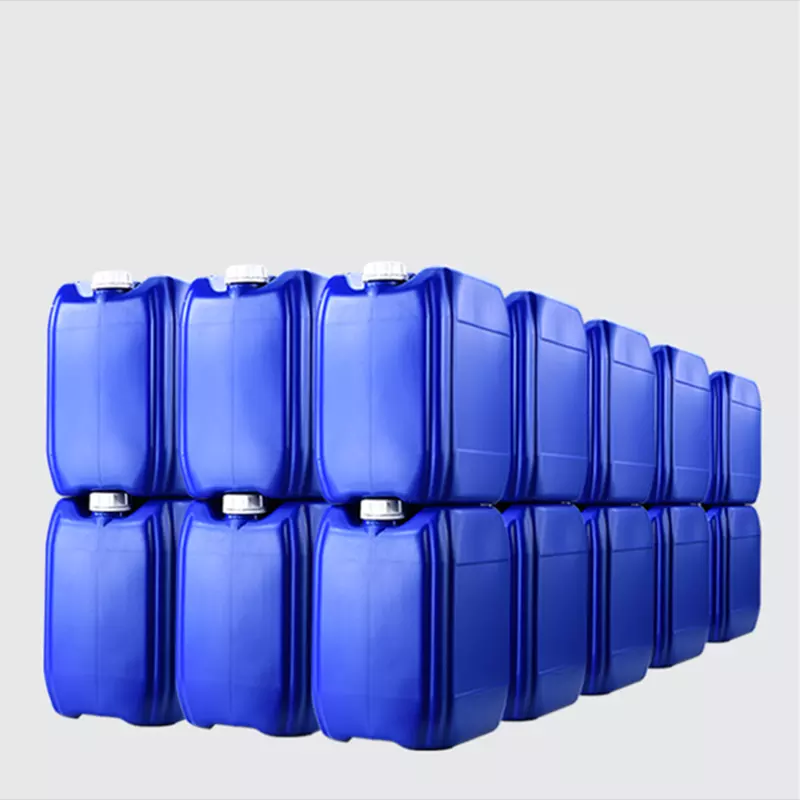
Renewable Energy: High resilience catalysts play a vital role in the generation of clean energy, facilitating processes such as water electrolysis for hydrogen production and fuel cells for electricity generation.
Benefits of High Resilience Catalysts
The use of high resilience catalysts offers numerous advantages, including:
Enhanced Efficiency: By lowering the activation energy required for chemical reactions, high resilience catalysts enable faster and more efficient processes, leading to increased productivity and reduced energy consumption.
Improved Sustainability: High resilience catalysts promote greener chemical reactions by minimizing waste, reducing emissions, and facilitating the production of renewable energy sources.
Cost Savings: The durability and longevity of high resilience catalysts translate into lower replacement costs and reduced downtime, resulting in significant economic benefits for industries.
Innovation: The development of high resilience catalysts drives innovation in various sectors, enabling the creation of new materials, processes, and products.
Ongoing Research and Future Prospects
The field of high resilience catalysts is constantly evolving, with researchers exploring new materials, designs, and applications. Some of the exciting developments in this area include:
Nanotechnology: The use of nanomaterials in high resilience catalysts offers enhanced surface area, improved reactivity, and better stability, opening up new possibilities for catalytic processes.
Biocatalysts: Inspired by nature, researchers are developing biocatalysts, such as enzymes and whole cells, that exhibit high resilience and selectivity in diverse chemical reactions.
Computational Design: Advanced computational tools and techniques are being employed to predict and optimize the performance of high resilience catalysts, accelerating the discovery and development of new materials.
Conclusion
High resilience catalysts are at the forefront of sustainable and efficient chemical reactions, transforming industries and paving the way for a greener future. As research continues to uncover new materials and applications, these remarkable catalysts will undoubtedly play an increasingly vital role in shaping the world of chemistry and beyond.
Recommended Reading:
NT CAT A-1
NT CAT 33L
NC CAT T
NT CAT 33LV
NT CAT ZF-10
NT CAT U28
NT CAT U26
NT CAT K-15
NT CAT D60
TMPEDA
Coating Innovations: How Spray Catalysts Revolutionize Surface Protection and Performance for a Wide Range of Industries
Discover the world of spray catalysts and learn how they contribute to enhanced surface protection, durability, and functionality in various coating applications.
Introduction
Spray catalysts are specialized materials designed to improve the performance and properties of coatings applied through spray techniques. These innovative catalysts play a crucial role in promoting better surface protection, durability, and functionality across a wide range of industries, including automotive, aerospace, marine, and construction. This article delves into the concept of spray catalysts, their applications, and the advancements that are shaping their future.
Understanding Spray Catalysts
Spray catalysts are typically composed of metal or metal oxide nanoparticles, which are integrated into the coating formulation or applied as a separate layer during the spray coating process. They function by facilitating chemical reactions that help to enhance the cross-linking, curing, and adhesion of the coating, resulting in improved surface protection and performance.
Applications of Spray Catalysts
The versatility of spray catalysts has led to their widespread adoption across various coating applications. Some of the most prominent applications include:
Automotive: Spray catalysts are used in automotive coatings to improve the durability, scratch resistance, and appearance of vehicle surfaces. By enhancing the curing and cross-linking of the coating, these catalysts contribute to better protection against corrosion, UV radiation, and environmental contaminants.

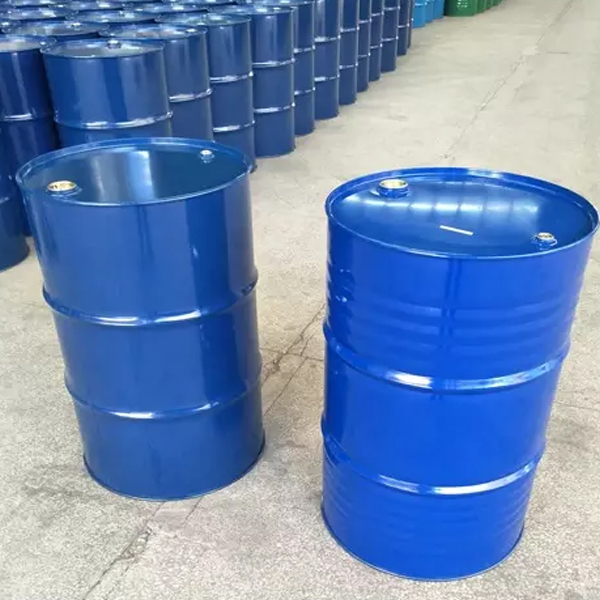
Aerospace: In the aerospace industry, spray catalysts are employed to enhance the performance of coatings applied to aircraft surfaces. These catalysts help to improve the resistance to high temperatures, humidity, and chemical exposure, ensuring the longevity and safety of aerospace components.
Marine: The marine sector benefits from spray catalysts in the form of anti-fouling and anti-corrosion coatings, which protect ships and offshore structures from the damaging effects of seawater and marine organisms. These catalysts contribute to improved coating performance and reduced maintenance requirements.
Construction: Spray catalysts are used in various construction coatings, such as anti-graffiti, waterproofing, and fire-resistant coatings. By enhancing the properties of these coatings, spray catalysts help to extend the lifespan of buildings and infrastructure while improving their overall appearance and functionality.
Advancements in Spray Catalysts Technology
The field of spray catalysts is continually evolving, with researchers and manufacturers constantly seeking to develop new and improved materials. Some of the latest advancements in spray catalysts technology include:
Nanotechnology: The integration of nanotechnology in spray catalysts has led to the creation of advanced materials with enhanced properties, such as increased surface area, improved stability, and better dispersion. These features contribute to more efficient and effective coating performance.
Eco-friendly Catalysts: In response to growing environmental concerns, the development of eco-friendly spray catalysts has gained momentum. These materials are designed to reduce volatile organic compound (VOC) emissions and minimize waste generation during the coating process.
Smart Coatings: Smart coatings, also known as responsive coatings, are a new generation of coating systems that can change their properties in response to external stimuli, such as temperature, light, or pH. Spray catalysts play a crucial role in the development of these intelligent materials.
The Future of Spray Catalysts
As the demand for high-performance, durable, and eco-friendly coatings continues to grow, the market for spray catalysts is expected to expand significantly. According to a recent study, the global spray catalysts market is projected to reach USD 2.5 billion by 2026, growing at a CAGR of 5.5% during the forecast period.
The future of spray catalysts lies in the development of advanced materials that can address the evolving needs of various industries. Researchers are focusing on creating multifunctional catalysts that can provide multiple performance benefits simultaneously, such as corrosion resistance, self-healing, and anti-microbial properties. Additionally, the development of sustainable and eco-friendly spray catalysts will continue to be a priority, as the world moves towards a greener and more environmentally conscious future.
Conclusion
Spray catalysts have undeniably transformed the landscape of coating technology, offering unparalleled surface protection, durability, and functionality. As advancements in technology continue to shape the future of spray catalysts, we can expect to see even more innovative and sustainable solutions that will further revolutionize various industries. With their unique properties and wide-ranging applications, spray catalysts are truly a testament to the power of human ingenuity and the relentless pursuit of progress.
